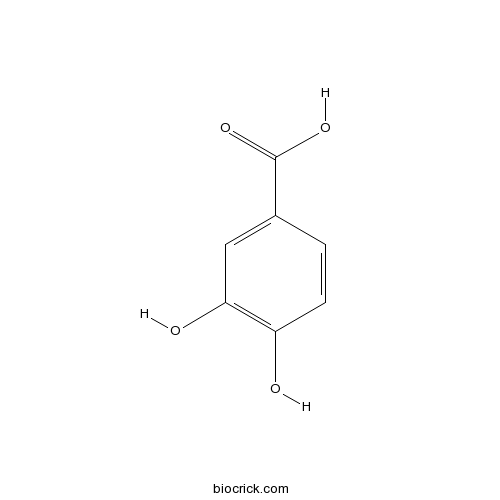Blumea laciniata
Blumea laciniata
1. The products in our compound library are selected from thousands of unique natural products; 2. It has the characteristics of diverse structure, diverse sources and wide coverage of activities; 3. Provide information on the activity of products from major journals, patents and research reports around the world, providing theoretical direction and research basis for further research and screening; 4. Free combination according to the type, source, target and disease of natural product; 5. The compound powder is placed in a covered tube and then discharged into a 10 x 10 cryostat; 6. Transport in ice pack or dry ice pack. Please store it at -20 °C as soon as possible after receiving the product, and use it as soon as possible after opening.
Natural products/compounds from Blumea laciniata
- Cat.No. Product Name CAS Number COA
-
BCN4537
3,4-Dihydroxybenzoic acid99-50-3
Instructions

[Studies on the chemical constituents of Blumea laciniata].[Pubmed: 19873734]
To study the chemical constituents of Blumea laciniata.
Antiviral activities of medicinal herbs traditionally used in southern mainland China.[Pubmed: 15478204]
The aqueous extracts from 21 medicinal herbs traditionally used in southern mainland China were screened for antiviral activities against human herpes simplex virus type 1 (HSV-1) and human respiratory syncytial virus (RSV) using a cytopathic effect (CPE) reduction assay. Three extracts from Agrimonia pilosa, Pithecellobium clypearia and Punica granatum, respectively, showed anti-HSV-1 activity, which was possibly contributed by the polyphenolic compounds in the herbal extracts. Six of the extracts, from Blumea laciniata, Elephantopus scaber, Laggera pterodonta, Mussaenda pubescens, Schefflera octophylla and Scutellaria indica, respectively, exhibited anti-RSV activity with 50% inhibition (IC50) concentrations ranging from 12.5 to 32 microg/mL, and selective indices (SI) ranging from 11.2 to 40. In addition to polyphenolic compounds, other constituents present in these extracts may also contribute to their anti-RSV activity.


